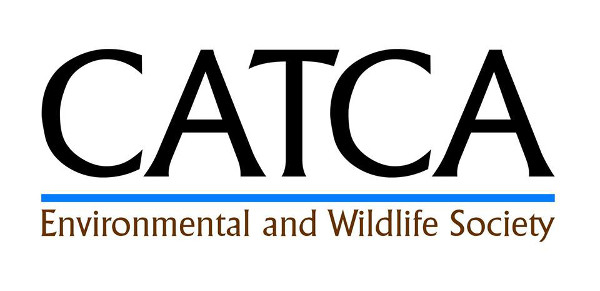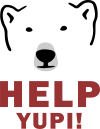

Internet Trade
The e-commerce better known as Internet Trade is a new growing phenomenon worldwide.
Millions of wild animals are captured from the wild to be sold illegally all over the world.
In the 21st century, technology has opened a new window of opportunity to sell live animals, in an easy, comfortable and unexposed way, from the own seller's home: online.
Animals (live or some derivative products made of animals), are now everyday more often found online. From caviar to live Siberian tigers, from elephant ivory to live Polar bears, from wolf fur to whale oil, from shark fins to live chimpanzees and from live pythons to a crocodile purses, you can find it all online.
CATCA started 3 years ago monitoring the e-commerce of Polar bears and narwhals. Dr. Andrzej Kepel from Poland became our mentor teaching us how to use this methodology created by him and developed with another colleague. This method has been used not only in Poland but also all over Central and Eastern Europe and has been praised by the CITES Secretariat as the only formal E-commerce reports.
The Polar bear and narwhal project was our original project and then CMEPS requested us to do it for them, so we did it for them.
The original E-trade on narwhal whales and polar bears specimens in Canada, the US and other countries CATCA draft report 2009 can be found here.
That same year, during the CITES E-Commerce Workshop in Vancouver in February 2009, CATCA challenged a well known international NGO who claimed that they monitored 3 countries in Latin America and that there was nothing really worth it. CATCA had already done a preliminary monitoring the year before all over Latin America too assess the problem, and to our dismay we found more that we expected. I promised the CITES Secretariat I will have proof in 1 year time for the CITES CoP15, that there is quite a lots of e-trade in Latin America.
Thanks to the Rufford Small Grants Foundation, we got a grant that allowed us to develop a project to investigate the Internet trade of CITES species of animals in Ecuador.
We chose Ecuador, because we believed that it would not have a well developed internet trade. But to our surprise the results were overwhelming. Anyhow, even with the large amount of animals that we found there, Ecuador still has barely any e-trade compared to other countries in Latin America, which have a very developed internet trade. The results were very interesting.
While conducting the investigation in Ecuador, we found elephant ivory, so we started to conduct a preliminary research in Latin America on our own account,looking for elephant ivory.
When we learn that there were going to be Proposals at the CITES CoP15 (March 2010), that will try to down list the African elephant populations of Tanzania and Zambia and to have a one time sale on ivory (last decision from the CITES CoP14 to allow Botswana, Namibia, Zimbabwe and South Africa to have a one time sale on their confiscated ivory, resulted in an estimated 38,000 African elephants poached in 2 and half years!), so we decided to create our own report to use as a lobbying tool in the CITES CoP15.
Working against the clock, we managed to have the two CATCA reports ready for the CITES CoP in 2010. They were both extremely successful.
The CATCA report 2010: Internet trade on protected animal species in Ecuador is here
This report was very successful and it helped to achieve a motion on the importance of the internet trade in CITES, and to create general awareness exposing the internet trade in Latin America.
It was so successful that it appeared in all these links of media worldwide in 5 continents:
- www.washingtontimes.com/news/2010/mar/22/internet-trade-threat-to-endangered-species
- www.thepeninsulaqatar.com/Display_news.asp?section=Local_News&month=March2010&file=Local_ews201003177101.xml
- weblogs.baltimoresun.com/features/mutts/blog/2010/03/report_internet_threatening_en.html
- www.ctv.ca/servlet/ArticleNews/story/CTVNews/20100321/endangered_species_100321/20100321
- cnews.canoe.ca/CNEWS/Environment/2010/03/21/13308206-ap.html
- www.nzherald.co.nz/world/news/article.cfm?c_id=2&objectid=10633752
- porthedland.igwn.com.au/index.php/news/national-news/internet-threatening-rare-species,17463491
- technology.canoe.ca/2010/03/22/pf-13314676.html
- news.scotsman.com/environment/Survivalrisktorarespecies.6169356.jp?CommentPage=1&CommentPageLength=1000
- www.watoday.com.au/breaking-news-world/internet-threatening-rare-species-20100322-qob0.html
- www.aolnews.com/science/article/internet-fuels-threats-to-rare-species/19408155
- www.spokesman.com/stories/2010/mar/22/delegates-focus-on-internets-role-in-species/?print-friendly
- www.menafn.com/qn_news_story_s.asp?storyid=1093314494
- iplextra.indiatimes.com/quote/06Fp1xWc996jF?q=Qatar
- www.hedgehogs.net/pg/newsfeeds/hhwebadmin/item/3027397/internet-is-biggest-threat-to-endangered-species-say-conservationists
- woofeed.com/Internet-is-biggest-threat-to-species/worldnews/Guardian
- schema-root.org/region/americas/south_america/ecuador/issues/ environmental_destruction/
- 1click.indiatimes.com/article/04Q3aQz7Qo4v1?q=Qatar
- www.pen.com.qa/news/qatar/index.php?ELEMENT_ID=29118
- www.zawya.com/printstory.cfm?storyid=ZAWYA20100317044304&l=044300100317
- www.pdfexplore.com/book/v3m-tab-pdf.html
- cari-pdf.com/pdf.php?q=catca
The CATCA report 2010: Internet trade of elephant ivory in Latin America, was an amazing tool for lobbying with the governments during the CITES CoP15. It was literally a war during the Plenary, with the Japanese and all their anti conservation friends and the African countries in favor of the one time sale of ivory Vs. the real pro-elephant conservation countries.
CATCA Founder and President, Ericka who had visit in January 2010 Kenya to write a couple of articles (One was about poaching in Kenya and about the Kenya Wildlife Service), was often praised for her big efforts to protect the sharks,Polar bears, blue fin tuna, etc. by the heads of he delegations. She was lobbying non stop for the African elephants and urging the African delegations to help her lobby before it was too late.
Ericka then was honored when Kenya as the head of the African Elephant Coalition (24 African countries fighting for the African elephant conservation), was appointed to lobby with the Kenya Minister of Environment and Forestry for three days, for the elephants sake. With the African elephant CATCA Report on one hand, Ericka lobbied intensely for several days, but thanks in big part to her great efforts, achieving to get a minority of EU countries to go against the Proposals that were threatening the African elephant populations, so the EU had to abstain and she got several Latin American countries to vote against too, so at the end, these Proposals (in two separate days were voted twice each one of these Proposals), were not approved and about 38,000 elephants in Africa got saved.
The CATCA internet trade on elephant ivory in Latin America Report is here.
Both reports were very well received by the CITES Secretariat and the Interpol.
The governments (most of them) congratulated CATCA for the formal reports.
A couple of governments (Chile and Portugal), requested CATCA to have meetings with the enforcement authorities of those governments, to explain them how we did this internet monitoring.
The main reason why CATCA does this kind of investigation is to expose the trade of wild animals.
The animals are captured in very cruel ways and as an example, whole families of primates are killed trying to protect their babies when they are kidnapped from their mothers. Then to get all these animals (reptiles, primates, felines,birds, amphibians, etc), they are kept in tiny hot spaces (stuffed in car engines, empty metal cans, suitcases, bags, so on) without water and food for days.
It is known that singing birds get their eyeballs pocked with needles, so they will not sing when is day light, some other birds get their beaks tied with ropes, their wings broken so they can't fly, sometimes monkeys get their mouths stitched to keep them quiet. It is a very cruel and unnecessary trade. Most of the animals (which often are infants or newborns) die before reaching a village or city, where they will be transported or shipped (in cramped, dirty places without light, water or food) to a bigger place.
The governments need to teach their citizens to respect and appreciate their wildlife in the wild and to protect it. Wild animals ARE NOT PETS.
We are showing the governments what to do to stop it or at least reduce it.
You can help to keep us doing this high level personal and active lobbying!
Help Yupi

WAD

Ericka Ceballos is the proud Canadian Ambassador of World Animal Day. Click on the WAD logo above to check for the events that we will hold to celebrate the animals in Canada.
AD-AV Award!

Click to view larger
Campaigns Against the Cruelty to Animals


Follow us on Twitter!
Click on the button link above for important animal news, events and alerts.
Contact Info
Ericka
PO Box 16021
617 Belmont Street
New Westminster
British Columbia
V3M 6W6
Canada
Email Us!